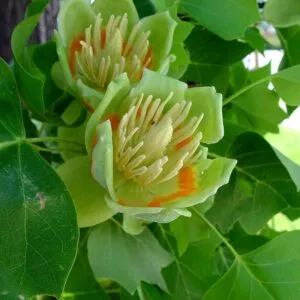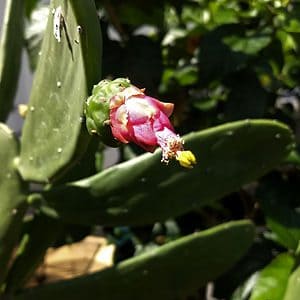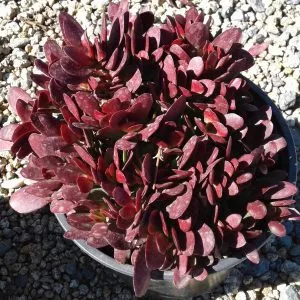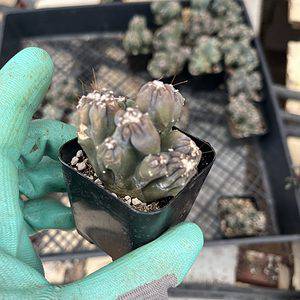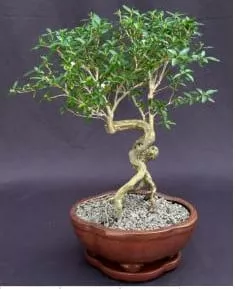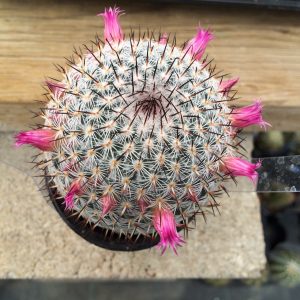No products in the cart.
Give your garden the WOW factor this year with Sargent crabapple! The medium-sized shrub packs a lot of fragrant punch in spring.
Then as summer ends, you are greeted with fall colors that last into early winter, providing the local wildlife with a tasty snack 🍎.
Furthermore, these apple trees are leaderless shrubs with a wide spreading habit instead of tall looking beautiful on a shrub border.
You can use it as a privacy screen to form a natural-looking hedge.
Plant Name: Malus sargentii
Other Name: Sargent Crabapple
Plant Type: Deciduous shrub or tree
Native Areas: Japan
Light Requirement: Full sun
Watering: Moderate
Fertilizer: None needed
Toxicity: Non-toxic
Temperature: Not too hot or cold
Propagation: Cuttings
Growth: 6-8 feet tall and 9-15 feet wide
Soil Type: Acidic, well-drained soil
USDA Hardiness Zones: 4-8
More About Malus Sargentii

With the Sargent crabapple tree in the garden, it has two main attractions. The first is the fragrant white flowers 💐 starting as light pink buds to welcome spring. When summer turns to fall, the blossoms turn into red berries the size of a raisin.
Hence, it adds a fall to winter interest in the garden. The only drawback with this species is that it has a biannual bloom cycle and will only be able to enjoy the pale pink buds every other year.
Still, the Sargent crabapple remains a beautiful shrub in the garden with abundant clusters of flowers, dark green leaves, and then the yellow fall color.
The benefit of the dwarf tree is that you grow them as a single-trunk specimen or multi-stemmed shrub. It has a dense spreading crown with zigzagging branches. The oval leaves reach four inches long with fine serrations.
The foliage starts light green, turning to dark green leaves and then yellow in the fall. Some people use the plant as a bonsai specimen. The red pea-sized fruit starts green-yellow, turning to bright red fruit in winter.
The plant is self-sterile. Thus, bees pollinate apple trees and flowers on the same shrub.
Types of Sargent’s Crabapple
Malus sargentii was never considered a species until recently as it was a variety of Malus sieboldii. For this reason, the plants are considered cultivars or hybrids of the other Malus species. Yet, there are two notable cultivars often available.
Tina is a dwarf cultivar with a mature height and spread of five feet.
Firebird is an upright cultivar you can prune with a single leader.
Also, check out the Royal Raindrops crabapple trees care guide while here.
Sargent Crabapple Care
Whether grown as a small tree or shrub, there is one concern you will face with it in the landscape. The main concern is the regular pruning to provide it with the right health. Still, it is worth all the effort for the snowy white flowers and red pea-sized fruits that are attractive and attract other wildlife to the garden.
Sargent’s Crabapple Light Needs

To enjoy the white blooms, yellow leaves, and red fruit in alternate years with crabapple trees is to provide them with enough sunlight. Place your tall to smallest crabapples in full sun to bloom heavily and enjoy the red fruit.
With full sun instead of part shade, the vigorous foliage gives a great display with the bright gold color. Another benefit is attracting butterflies 🦋 and birds enjoying the bright red berries in the landscape grown as privacy screens.
Moist Well, Drained Soil

The Sargent crabapple tree adapts well to even clay soil and is beneficial in the garden when you know you do not have ideal soil. But it prefers moist, well-drained loamy soil that is slightly acidic. When the soil conditions are not met, you do not have the healthy bright red fruit to bloom production.
It can tolerate drier conditions but prefers moist soil.
Watering Sargent Crabapple Trees
Keep young trees well-watered until established, as they will need weekly watering to develop a healthy root system. We recommend doing a soil finger test about three inches deep to determine if you need to water your plants.
Temperature and Humidity

The perfect temperature for Sargent crabapple is not too hot or cold. These plants suffer frost damage during cold winters, and in heat 🔥 the foliage will scorch. Hence, Sargent crabapple grows best in the USDA hardiness zones 4 to 8.
But extreme heat climates provide some afternoon shade and block them from cold winds.
Fertilizing Malus Sargentii
You need not fertilize your plants as they can do well independently, making them very low maintenance for feeding. If you need to fertilize, test the soil for any deficiencies before feeding.
Pruning Malus Sargentii
When pruning Sargent crabapple, it is mainly done to keep the zigzagging branches appealing by removing the dead and damaged foliage. It does form a natural round shape when not trimmed.
The best time to do this is in late winter to ensure no blight is present. When pruned in spring, it allows blight-causing pathogens to infect the fresh green growth.
While pruning in winter can prevent the pink flowers from opening, it remains the best outcome to prevent them from getting sick.
-
Free Shipping$34.95Sold By: CKK PRODUCTS LLC
$39.95In stock
Tulip Tree Seedling XL/jumbo size
Rated 5.00 out of 5 based on 1 customer rating00Sold By: CKK PRODUCTS LLC -
$7.00Sold By: Painted Petals and More
In stock
Nephthytis — Arrow plants
Rated 4.72 out of 5 based on 65 customer ratings00Sold By: Painted Petals and More -
Free Shipping$21.99Sold By: Gar-Zen Botanical Design
In stock (can be backordered)
Opuntia Pear Spineless Cactus (2 Pads) Ships Free.
Rated 4.86 out of 5 based on 49 customer ratings00Sold By: Gar-Zen Botanical Design -
Free Shipping$22.99Sold By: Gar-Zen Botanical Design
In stock (can be backordered)
Plumbago auriculata Cape leadwort, Blue Plumbago Ships Free.
Only 10 available and it’s in 1 people’s basketRated 4.86 out of 5 based on 49 customer ratings00Sold By: Gar-Zen Botanical Design
Propagating Sargent Crabapple
As it is a low-growing tree, you can grow it on borders and easily propagate it under utility lines using cuttings. So, it helps to choose a parent blooming heavily to guarantee success. Still, you will need to have patience. 🙄
Find a healthy branch on new growth of about 1/8 inch in diameter and cut it about 7 inches long.
Next, cut the end of the piece at a 45° angle.
Then use a pencil or anything with a point to poke holes in the prepared potting mix.
Dip the cut end in a rooting hormone, place it in the hole, and keep it moist.
Place the container in a cool spot in indirect light.
Care for it and check in a month to see if the cutting is rooted.
When the roots become established, transplant your cuttings into separate pots and leave them in the container for three months before transplanting them to the garden.
Common Pests & Plant Diseases
Sargent crabapple has good disease resistance to most pathogens. Still, it remains susceptible to apple scab, fire blight, and leaf rust. It also has few pest threats, but you get occasional attacks from spider mites, aphids, Japanese beetles, and caterpillars.
Frequently Asked Questions
Sargent crabapple has a good lifespan; you can expect it to live up to 60 years under the right growing conditions and in the correct hardiness zones.
Yes, you can eat the fruit; birds love it, and it has a sweet rose-like taste.
While conditions and location will affect individual plants, on average, most shrubs will start producing fruit two to five years after it has been planted.
To form privacy screens, you can plant a Sargent crabapple tree in the landscape as a specimen plant or on borders. One thing is for sure when the pink buds open; you will have the most gorgeous scent flowing through the landscape.
Yes, you can grow the Malus sargentii in a container but choose an appropriate size to hold your tree.
The tree reaches a height of 8 feet tall and is more wide spreading than growing with height.
Whether you want to buy, sell, or simply reach out to other plant enthusiasts, Plantly is the right place to be!
-
$19.99Sold By: Succulent Oasis
In stock
Large Succulent Plant Crassula Platyphylla. Beautifully colored deep red succulent.
Only 24 available and it’s in 1 people’s basketRated 4.84 out of 5 based on 352 customer ratings00Sold By: Succulent Oasis -
$4.89Sold By: Cacti and Exotica
In stock
Cactiandexotica Cereus forbesii | Ming thing | 2″ Pot
Rated 4.98 out of 5 based on 59 customer ratings00Sold By: Cacti and Exotica -
Free Shipping$150.54Sold By: BONSAI WORLD LLC
Only 1 left in stock
Flowering Mount Fuji Serissa Bonsai Tree With Raised Roots (seris
Sold By: BONSAI WORLD LLC -
$8.99Sold By: Succulent Oasis
In stock
Cactus Plant Small Mammillaria Eleganz | A beautiful, geometric design of spines is very unique
Rated 4.84 out of 5 based on 352 customer ratings00Sold By: Succulent Oasis
